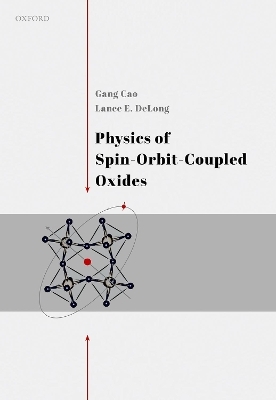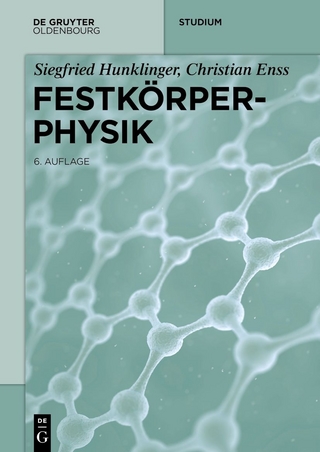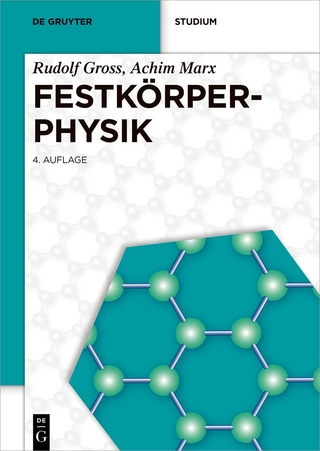
Physics of Spin-Orbit-Coupled Oxides
Oxford University Press (Verlag)
978-0-19-960202-5 (ISBN)
This book is aimed at graduate students, post docs and senior researchers with preliminary expertise in materials physics or chemistry, and with an interest in the physical and chemical properties of 4d- and 5d transition metal oxides, especially ruthenates and iridates.
The 4d- and 5d-transition metal oxides are among the most current and interesting quantum materials. This book reviews recent experimental and theoretical evidence that the physical and structural properties of these materials are decisively influenced by strong spin-orbit interactions that compete with comparable Coulomb, magnetic exchange and crystalline electric field interactions. This competition often leads to unusual ground states and magnetic frustration that are unique to this class of materials. Novel coupling between the orbital/lattice and spin degrees of freedom, which seriously challenge current theoretical models and are not addressed by traditional textbooks, are of particular interest,
This book also reviews a few techniques for single-crystal growth that are most suitable for the 4d- and 5d-transition metal oxides. The discussion is intended to help fill an existing void in the literature describing relevant synthesis techniques for 4d- and 5d-materials, which is a daunting experimental challenge.
Professor Gang Cao. Ph.D. in Physics, 1993, Temple University. Postdoc, Assistant Scientist, and Associate Scientist, 1993-2002, National High Magnetic Field Laboratory. Full Professor of Physics, 2016 - Present, University of Colorado at Boulder. Fellow of the Division of Condensed Matter Physics, American Physical Society, 2009. University Research Professor, University of Kentucky, 2009-2010. Albert D. & Elizabeth H. Kirwan Memorial Prize for Outstanding Contributions to Original Research or Creative Scholarship, University of Kentucky, 2015. Jack and Linda Gill Eminent Professor, University of Kentucky, 2011-2016. Over 250 publications. Professor Lance E. De Long. Graduated from University of Colorado, Boulder, B.A. in Physics, 1968. M.S. in Physics, University of California, San Diego, 1969. Ph.D. in Physics, 1977 (M. Brain Maple, Thesis Advisor). Associate Professor of Physics, 1979-2001; Full Professor of Physics, University of Kentucky, 2001-present. Scientist in Residence, Argonne National Laboratory Division of Materials Research and Technology, 1985-1986. Program Director, Low Temperature Physics, Division of Materials Research, National Science Foundation, 1988-1989. Visiting Scholar, University of California, San Diego, 2002. Co-Founder and Technical Consultant, LevTek Inc., 2000-2007. Fellow of the Division of Condensed Matter Physics, American Physical Society, 2006. Outstanding Referee for Journals of the American Physical Society, 2008. University Research Professor, University of Kentucky, 2015-16.
Preface
I. Fundamental Principles
1: Introduction
1.1. Overview
1.2. Outline of the Book
1.3. Fundamental Characteristics of 4d- and 5d-Transition Metal Oxides
1.4. Crystal Fields and Chemical Aspects
1.5. Electron-Lattice Coupling
1.6. Spin-Orbit Interactions
1.7. The Dzyaloshinsky-Moriya Interaction
1.8. Phase Diagram of Correlated, Spin-Orbit-Coupled Matter
1.9. Absence of Topological States in 4d- and 5d-Transition Metal Oxides
Further Reading
References
II. Phenomena in 4d- and 5d-Transition Metal Oxides
2: Spin-Orbit Interactions in Ruddlesden-Popper Phases Srn+1IrnO3n+1 (n = 1, 2 and ?)
2.1. Overview
2.2. Novel Mott Insulator: Sr2IrO4
2.3. Borderline Insulator: Sr3Ir2O7
2.4. Metallic SrIrO3 and its Derivatives
Further Reading
References
3: Magnetic Frustration
3.1. Overview
3.2. Two-Dimensional Honeycomb Lattices: Na2IrO3 and Li2IrO3
3.3. Ruthenate Honeycomb Lattices: Na2RuO3 and Li2RuO3
3.4. Three-Dimensional Honeycomb Lattices: b-Li2IrO3 and g-Li2IrO3 and Hyperkagome Na4Ir3O8
3.5. Pyrochlore Iridates
3.6. Double-Perovskite Iridates with Ir5+(5d4) Ions: Absence of Nonmagnetic Singlet Jeff = 0 State
3.7. Quantum Liquid in Unfrustrated Lattice Ba4Ir3O10
Further Reading
References
4: Lattice-Driven Ruthenates
4.1 Overview
4.2. Orbital and Magnetic Order in Doped Ca2RuO4
4.3. Unconventional Magneto-Transport Properties of Ca3Ru2O7
4.4. Pressure-Induced Transition from Interlayer Ferromagnetism to Intralayer Antiferromagnetism in Sr4Ru3O10
4.5. General Remarks
Further Reading
References
5: Electric-Current-Control via Strong Spin-Orbit-Coupling
5.1. Overview
5.2. Ca2RuO4
5.3. Sr2IrO4
5.4. General Remarks
Further Reading
References
III. Materials Synthesis
6: Single-Crystal Synthesis
6.1. Overview
6.2. Flux Technique
6.3. Optical Floating-Zone Technique
6.4. Field-Altering Technology
Further Reading
References
Appendix: Synopses of Selected Experimental Techniques
Subject Index
Compound Index
| Erscheinungsdatum | 11.06.2021 |
|---|---|
| Zusatzinfo | 102 b/w line drawings, 6 colour images |
| Verlagsort | Oxford |
| Sprache | englisch |
| Maße | 175 x 250 mm |
| Gewicht | 574 g |
| Themenwelt | Naturwissenschaften ► Physik / Astronomie ► Festkörperphysik |
| Naturwissenschaften ► Physik / Astronomie ► Thermodynamik | |
| Technik ► Elektrotechnik / Energietechnik | |
| ISBN-10 | 0-19-960202-6 / 0199602026 |
| ISBN-13 | 978-0-19-960202-5 / 9780199602025 |
| Zustand | Neuware |
| Haben Sie eine Frage zum Produkt? |
aus dem Bereich


